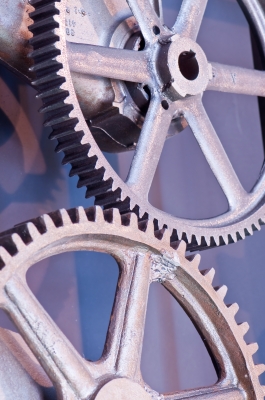Learn more about each of the parts of a boiler and get to know your boiler better.

A boiler is simply a closed vessel where water (or other liquid) is heated. It is also one of the most important machines we have in our homes. A gas boiler is a need in every home especially during the cold months.
A boiler breakdown can be a headache, especially if the boiler completely stops working when you need it to. Boiler repairs can get costly and inconvenient. By learning more about and understanding the parts of a boiler, you may be able to help prevent emergency boiler repairs or even do some yourself.
Parts of a Boiler
These are the parts of a boiler:
- Air bleeder valves and air purge devices – used to vent out unwanted air from hot water heating systems
- Air scoops separators purgers – are automatic air purging devices capture air in hot water piping and send it either to an expansion tank or to an air bleeder/air vent
- Automatic water feeder – provides makeup water in the system; a different water feeder valves is used on a hydronic heating boiler and on a steam boiler
- Baseboards – electric or hot water heat radiating devices transmit heat from hot water or steam into the occupied space
- Boiler flue vent connector – “stack pipe” or “flue”
- Burner – initiates combustion reaction within the boiler
- Chimney and chimney flue – vents these gases safely outdoors, above the building
- Circulator pumps – force hot water through heating baseboards, radiators, or convector units
- Combination control – combines High Limit and “Low Limit”
- Combustion Chamber – where fuel is burned
- Draft hoods – vents exhaust gas properly on gas-fired heating boilers
- Electric switch – turns the heating system’s electrical power on and off
- Expansion tank – absorbs initial system pressure increase
- Flame sensing device: Cad Cell or Stack Relay
- Heat Exchanger – receives hot water from the combustion chamber and pumps that through pipes to baseboard heaters or radiators
- High Limit and Low Limit (for tankless coil) – separate controls on older equipment
- Low water cutoff control – is a safety device that shuts down the heating boiler if its water is lost
- Mixing valve – tempers outgoing domestic hot water from a tankless coil or to control radiant floor heat temperature
- Oil Burner & oil burner parts: oil pump (fuel unit), blower, nozzle, electrodes, transformer, electric motor, air shutter, oil delay valve
- Oil Burner reset switch & oil burner motor reset switch – a reset switch may be on the cad cell relay or on the stack relay of the oil burner as well as a reset switch on the oil burner electric motor
- Oil tank, oil piping, oil valves, oil gauges
- Oil Burner Controls, Aquastat controls: high limit, low limit, circulator controls, cad cell relay, other flame sensors
- Piping on heating systems: Hot water (or steam) distribution piping and on steam systems, condensate return piping
- Piping valves on heating systems: Hot water distribution piping drain and balancing valves
- Pressure Relief Valve – releases temperature and pressure if other safety controls fail
- Pressure and Temperature gauge -12 psi cold, less than 30 psi hot. Over 30 psi dumps relief valve
- Radiators – transmits heat from hot water or steam into the occupied space; each steam radiator has a steam vent to permit steam to rise into the radiator
- Sight glass – gives visible indication of the boiler’s water level on steam boilers
- Spill switches – tells you if there is flue gas spillage at gas-fired equipment in the combustion gas exhaust venting systems and will turn off the heating appliance if there is gas spillage
- Tankless coil or a side-arm coil – is a way of making domestic hot water using the heating boiler
- Thermostats – send messages to the burner electronically when the system needs to produce heat
- Zone valves – controls hot water circulation through multiple heating
Remember that boiler installation must only be completed by a qualified engineer. Your boiler must also have an annual boiler service done regularly to ensure it is in perfect working condition. All services and repairs must be done by qualified gas safe registered engineers only.
Call RJ Gas today and ask about getting any parts of a boiler replaced or repaired.








